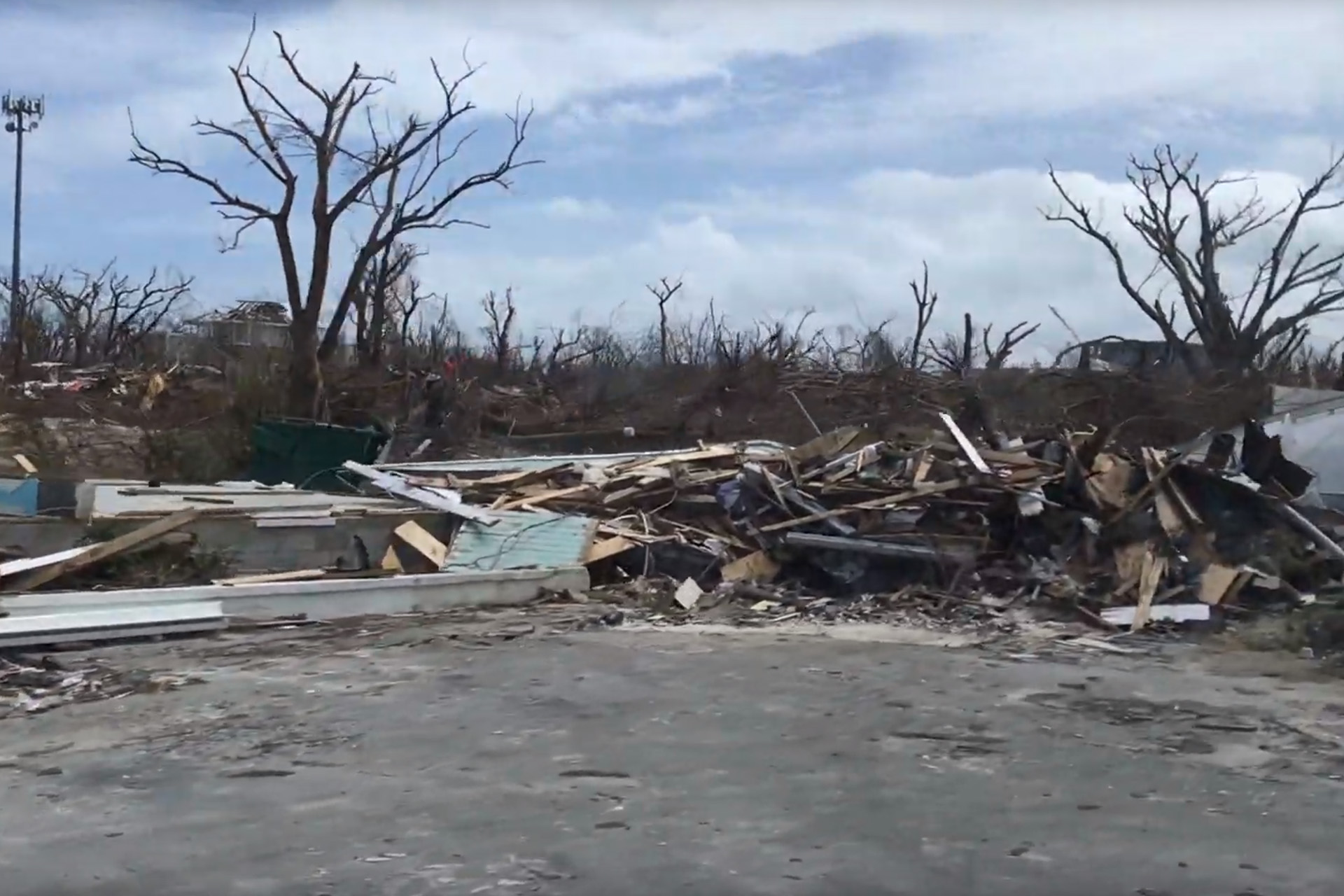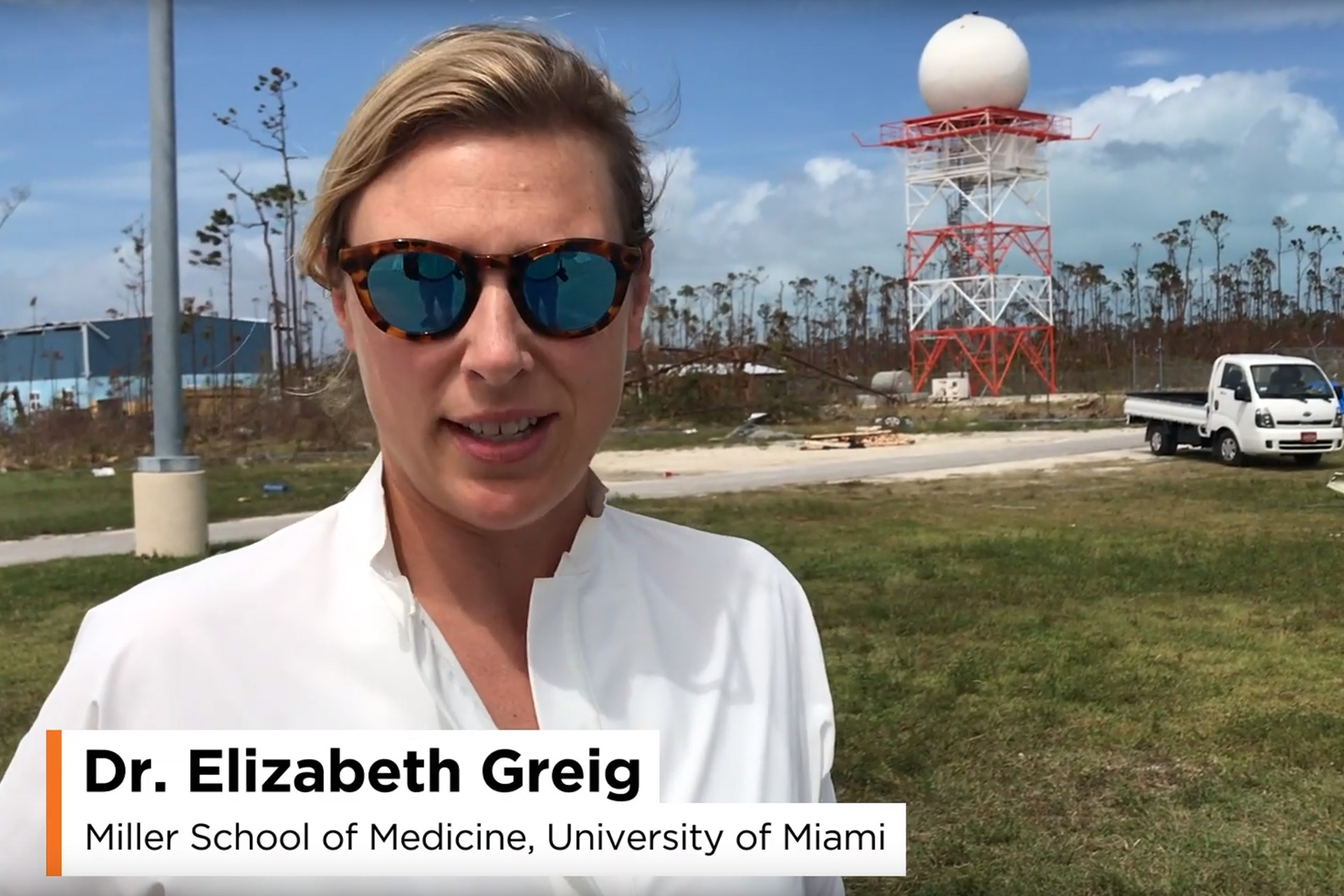Help for the
BAHAMAS
A UM delegation found a critical need for long-term assistance with rebuilding and recovery
Reporting by Peter E. Howard
S
eptember 23, 2019, Marsh Harbour, Great Abaco Island, Bahamas — Your senses are assaulted by two things:
First, the brown landscape. Gone is the lush, green scenery, the once-swaying pines and palms still standing stripped clean; others snapped in half or leveled by the relentless wind and rising seas courtesy of Hurricane Dorian, laying as scattered toothpicks on the ground.
Second, the silence. For miles, only a handful of people are visible, sitting by vacant doorways or peeking from windows. Gone are the seaside restaurants that once bustled with tourists, the local workers milling about at shopping plazas, and the sound of a steady stream of cars and trucks navigating the maze of narrow roadways.
Scary quiet, said one visitor.
Around you, in each direction, is the new reality. Every house, market, and business is ruined or heavily damaged. In some locations, only a barren foundation remains where there was once a house, a place filled with vibrant life. Thousands of cars and trucks are a jumbled mess, pilings at the marinas stand as silent sentinels, the docks and boats once lashed to them torn away. Boats are now inland, sitting on rooftops, in yards, on the side of roads, or sunk.
While the official death toll in the Bahamas from Hurricane Dorian stands at 52, more than 1,300 people are reported missing, with many feared to be from Marsh Harbour, one of the hardest-hit areas and a once lively, diverse community of Bahamians and Haitian immigrants. Many of them lived in the low-lying neighborhood called the Mudd, which was decimated by the storm.
On Sunday morning, a delegation from the University of Miami arrived at the Leonard M. Thompson International Airport to meet with the Bahamas Health Minister Duane Sands, M.D., and local health officials to talk about ways the University can assist with health care and rebuilding.
The Bahamian government and people, said Hilarie Bass, chair of the University’s Board of Trustees who led the delegation, “will have a partner in the University of Miami to work with for a long period of time.”
As the King Air 350 that took the delegation the 200 miles to the still wasteland pulled up to the empty terminal, a small bus and two pickups arrived on the tarmac, which just a few weeks earlier had been covered by storm surge. The small caravan crept along miles of roadway surveying the area and pulled to a stop in the heart of the Mudd.
Before the storm, bullhorns and sirens were used to roust and evacuate those living in the Mudd, said Maxine Duncombe, with the Abaco Administrator’s Office.
“I call this ground zero,” Duncombe said, looking out over the expanse of debris. “It was just utter devastation.”
Barth A. Green, M.D., executive dean of global health and community service at the Miller School of Medicine, looked upon the carnage, calling it “devastating and horrific.”
Nearly 10 years ago, in January 2010, Dr. Green and a small army of doctors and engineers deployed to Haiti after an earthquake leveled parts of Port-au-Prince and killed tens of thousands of people. The University established a tent hospital, and volunteers stayed for months caring for the injured. The University continues its work in Haiti, providing primary care, mental health treatment and training, designing resilient communities, and other efforts.
While surveying the wreckage Sunday, Dr. Green drew on his experience from Haiti and saw possibilities for the Bahamas.
“This is an opportunity to do something better,” he said. “Under the direction of the Ministry of Health and our partners in the Bahamas, I think we can make safe and effective progress. It takes a village.”
After stopping at the Mudd, the group went to the Marsh Harbour Healthcare Centre, a 32,000-square-foot facility that opened in 2017. While the building sustained some damage, it appeared as a healthy oasis amid the surrounding ruins. It’s a possible location for University doctors and nurses to help treat patients as evacuees housed in shelters in Nassau and other areas begin returning to the Abacos in the coming weeks.
Hooked to generators for power, the facility houses an operating room, triage area, dentistry, and morgue. Equipment is sparse, and some was damaged by falling debris or water. A small crew keeps the hospital going.
During a brief roundtable discussion at the hospital between the University delegation and Bahamian health care officials, Bass emphasized the University’s commitment to the recovery.
“The University is completely supportive,” Bass told Dr. Sands. “There is nothing more important than helping the Bahamas.”
Henri R. Ford, M.D., M.H.A., dean and chief academic officer of the Miller School, like Green, jumped in to assist after Haiti’s earthquake, and said he was energized by the resilience he sees. “I am truly inspired. I think I can speak for the entire University of Miami delegation that it is our duty to be here and begin to map out how we can assist.”
Dr. Green added: “Whatever we have is available to you. It’s a privilege to work with you and your team.”
Hurricane Dorian struck the northern islands of Grand Bahama and the Abacos on Sept. 1 with sustained maximum winds of 185 mph. The storm stalled in place and pulverized the communities with howling winds and a storm surge that was estimated at 10 to 20 feet high.
Sands said the relief efforts provided to the Bahamas have been “nothing short of amazing,” coming from relief agencies, the Netherlands, Great Britain, people in the United States, and others. Dorian caused an estimated $7 billion in damage and knocked out 15 to 20 percent of the country’s economic capacity.
Rebuilding housing for the evacuees will be a priority, Dr. Sands said, and officials are leaning toward constructing a tent city in Marsh Harbor in the interim.
“What Abaco and Grand Bahama end up looking like is an unknown,” Dr. Sands said. “It only matters now what happens from here.”
Dorian left in its wake more than 1.5 billion pounds of debris in Marsh Harbour. Delon Brennen, M.D., deputy chief medical officer with the Ministry of Health, said many of the missing were most likely swept out to sea. He’s certain some bodies remain buried in the rubble. Buildings that have been searched have a “C” inside a diamond spray painted on the front, signifying the building was cleared. Others bear a “D” inside a diamond — indicating a body was found there.
University of Miami health care and facility experts had made three previous excursions to the Bahamas to meet with officials, assess needs, and determine where best the University could assist in recovery. The task is complex and the needs ever-shifting, and University officials remain steadfast in their commitment to our neighbors located less than a couple of hundred miles away.
In addition to Bass, Dr. Ford, and Dr. Green, the delegation included Miller School Drs. Elizabeth Greig and Antonio Marttos; Ron Bogue, assistant vice president of facilities and operations on the medical campus who oversaw construction of the 240-bed tent hospital in Haiti; and Josh Friedman, senior vice president for development and alumni relations whose division launched The U Responds: Hurricane Dorian Response Fund to aid communities impacted by the storm. They were also accompanied by Gordon Willcock with the nonprofit agency Direct Relief, who delivered medical supplies to the Marsh Harbour Healthcare Centre.
Hundreds of doctors, nurses, and other health providers at the University are standing by to volunteer, including faculty with the Miller School, School of Nursing and Health Studies, the School of Architecture, College of Engineering, College of Arts and Sciences, and the Rosenstiel School of Marine and Atmospheric Science. Green said some medical teams could be deployed soon once details are worked out with Sands and the Ministry of Health.
Dr. Sands recalled receiving a call from Dr. Green shortly after Hurricane Dorian’s passage.
“Barth called me up and said he wished to help,” Dr. Sands said. “We met, and it has felt like I have known him for years. I want to say thank you for all you have done, and what you are doing.![]()

DEVASTATION:
In Marsh Harbour, every house, market and business is ruined or heavily damaged. In some locations, only a barren foundation remains.
Photograph by Travis Horn
ASSISTANCE:
Bahamas Health Minister Duane Sands (left) with Dean Henri R. Ford, UM Trustees Chair Hilarie Bass and Executive Dean Barth A. Green.
Photograph by Peter E. Howard
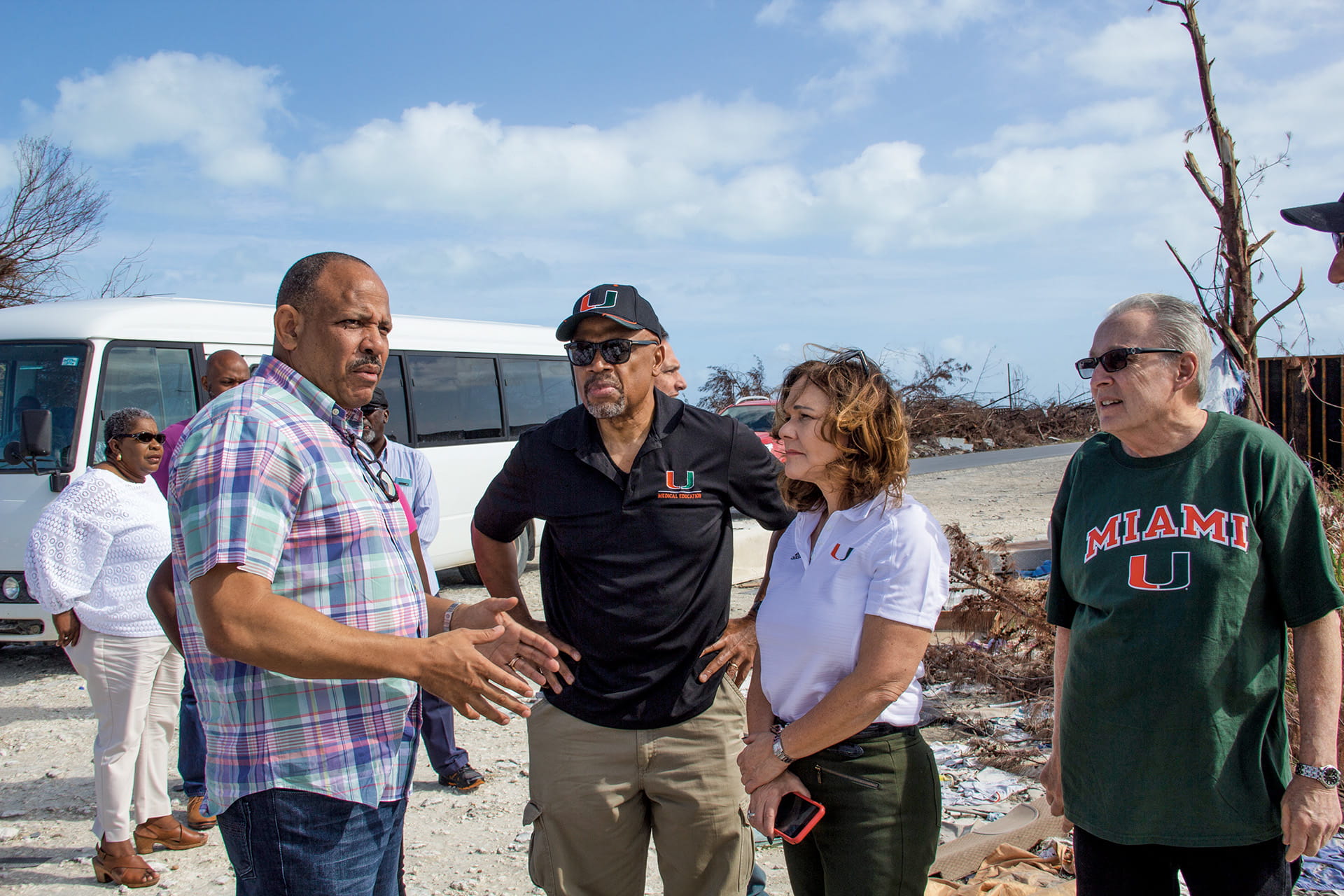
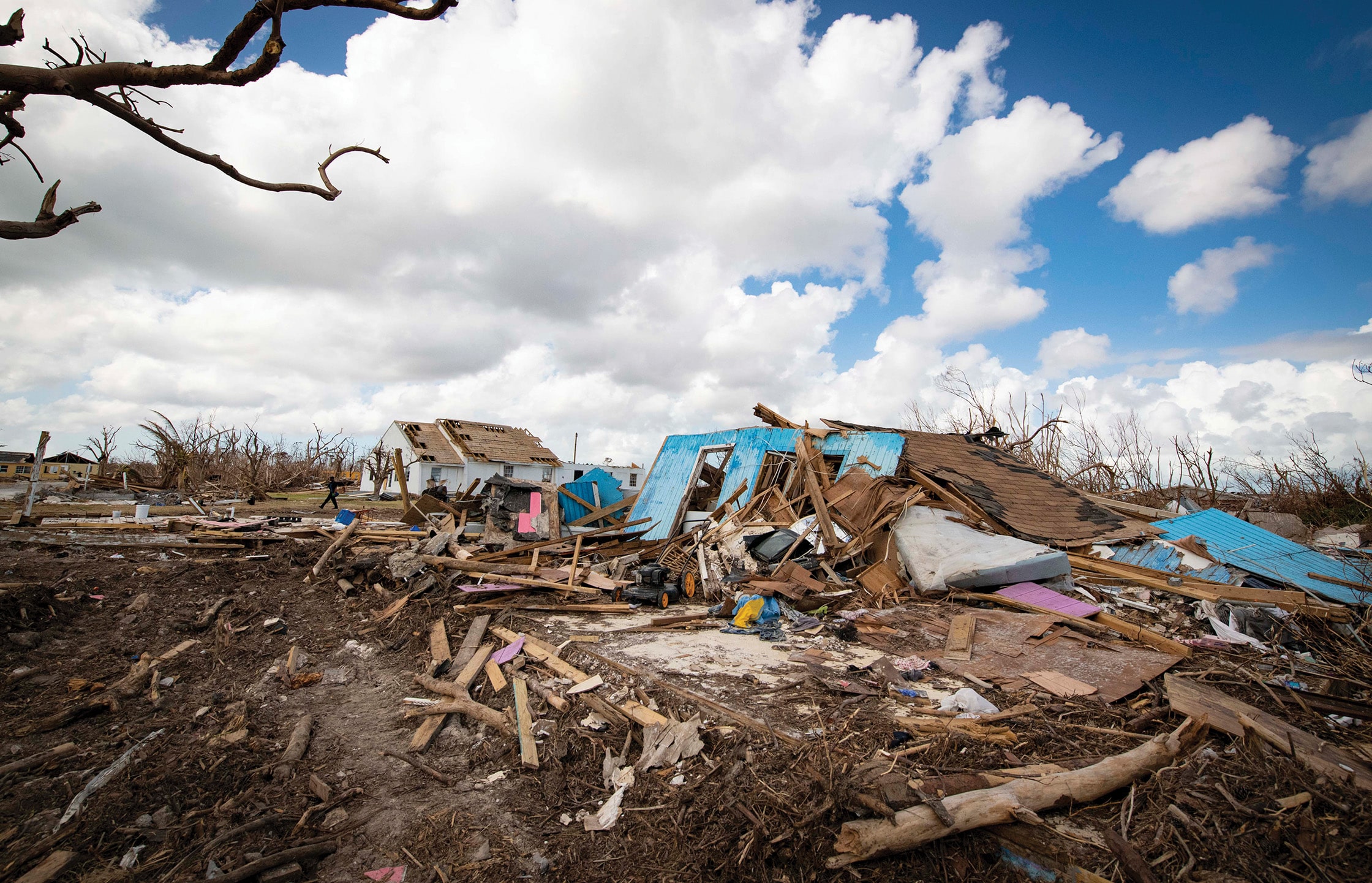
DESTRUCTION: Hurricane Dorian left in its wake more than 1.5 billion pounds of debris in Marsh Harbour.
Photograph by Travis Horn
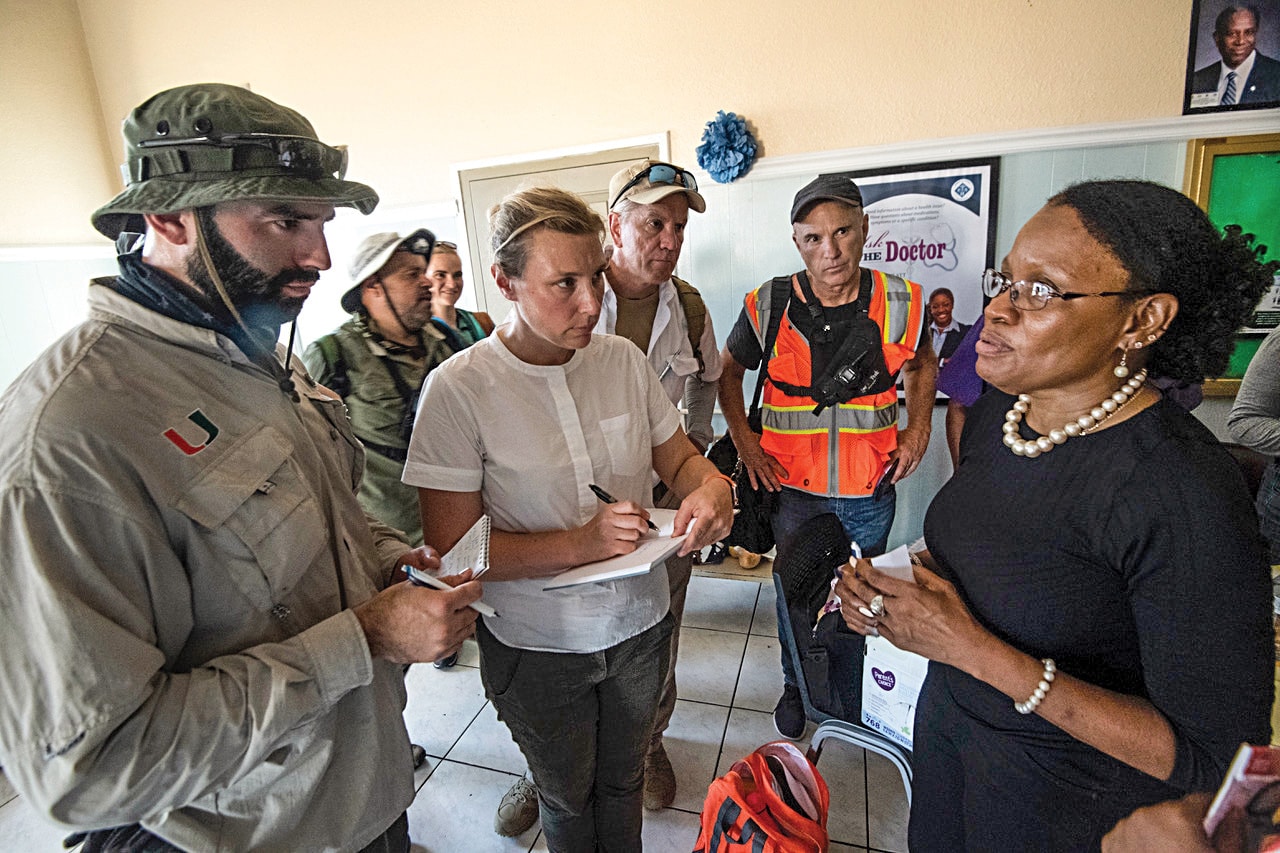
COMPASSION :
Miller School Emergency Manager Vincent J. Torres and Elizabeth Greig, M.D. ’10, with Sharon Williams of Rand Memorial Hospital in Freeport.
Photograph by Travis Horn
HOPE:
Jonathan Jiménez, a UM materials management clerk, with donated medical supplies.
Photograph by Evan Garcia
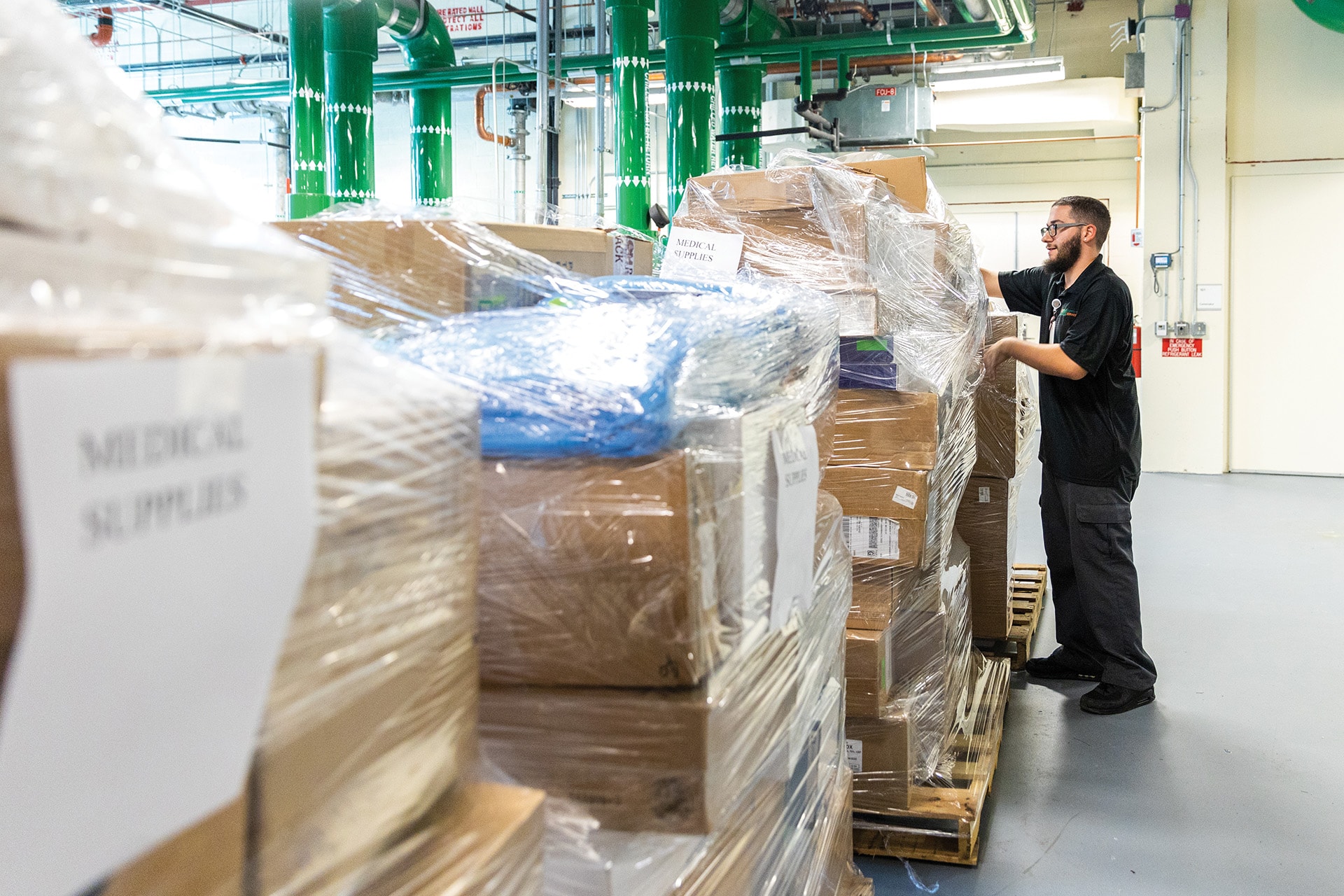
VIDEO: A delegation from the University of Miami visited Marsh Harbour, Great Abaco Island in the Bahamas on Sunday, Sept. 22. They met with Duane Sands, minister of health for the Bahamas, and other health providers to discuss opportunities for the University to provide health care and assist in recovery efforts.
Video by Peter E. Howard
VIDEO: Dr. Elizabeth Greig with the University of Miami Miller School of Medicine, visited Marsh Harbour on Grand Abaco Island, Bahamas, on Sunday, Sept. 22, 2019. She discusses the needs of the island.
Video by Peter E. Howard


